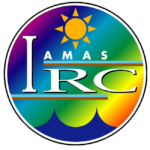Chair: Iouli Gordon
Click here for the Proceedings of the 11th HITRAN/10th ASA Conference
The ASA working group was conceived at the time of the 1984 International Radiation Symposium in Perugia, Italy. ASA had its first ad hoc meeting at the Ozone Quadrennial meeting the following week.
The six principal topics of ASA are:
– Line shape, Line-coupling, and Continua
– Atmospheric Observations
– Experimental Techniques
– Laboratory Data
– Databases
– Non-local Thermodynamic Equilibrium Processes
Initial Co-chairs:
Rudolphe Zander of the Universit? de Li?ge, Belgium, IRC representative
Alain Barbe of the University of Reims, France, IOC representative.
International ASA workshops have been held every three years (Oxford 1987, Moscow 1990, 2002, Reims 1993, 1996, 1999, 2005, 2008). In addition to the proceedings of these meetings, several peer-reviewed Special Issues have resulted: Journal of Quantitative Spectroscopy and Radiative Transfer (JQSRT) volume 52, number 3-4 (1994); JQSRT volume 39, number 3-5 (1998); Atmospheric and Oceanic Optics, volume 16, number 3 (2003).
ASA Objectives:
1) To bring together laboratory spectroscopists and field experimentalists (who perform balloon-
borne, airborne, ground-based, and satellite measurements).
2) To evaluate the spectroscopic requirements in terms of line parameters.
3) To make the best possible assessment of the errors in atmospheric data and the associated
spectroscopic parameters, geophysical parameters, and experimental uncertainties.
4) To evaluate the accuracies and sufficiency of the molecular spectroscopic databases, for
example HITRAN, and to make recommendations for their updates.
5) To make recommendations in a general sense for future efforts to obtain grants by various
sponsors at national and international levels.
6) To extend the range of the scientific investigations related to the atmospheric spectroscopic
application.
7) To include applications to planetary atmospheres.
These meetings have produced much fruitful collaboration, and foster a appreciation for standards and intercomparison efforts needed in atmospheric spectroscopy.
